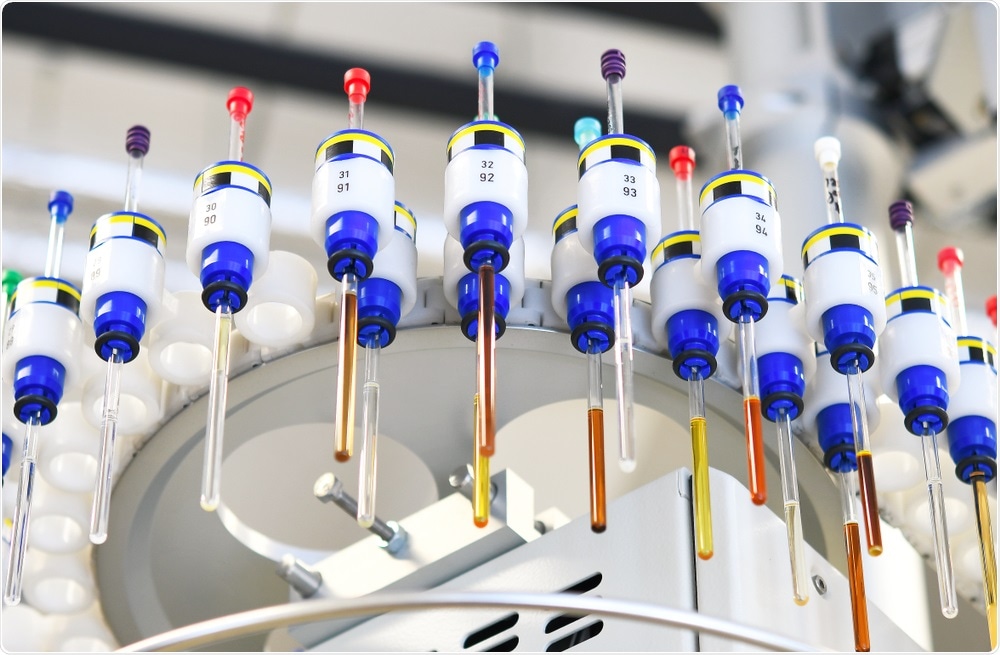New York University Abu Dhabi researchers used nuclear magnetic resonance techniques to determine the structure of a specific nanobody, Nb23, facilitating a better understanding of how the small protein derived from an antibody type—found only in camelids (for example, llamas, camels, and alpacas) and sharks—fights against diseases like lupus, rheumatoid arthritis, psoriasis, breast cancer, and lymphoma.

NMR. Image Credit: smereka/Shutterstock.com
Gennaro Esposito, visiting professor of chemistry, along with his associates Mathias Percipalle and Yamanappa Hunashal, at the NYUAD Nuclear Magnetic Resonance (NMR) laboratory, used NMR spectroscopy to determine the structure of the Nb23 nanobody in water. The research findings have been published in the journal Molecules.
Researchers generally determine the protein structure from solid samples, from frozen solutions using electron microscopy, or from crystals using X-ray. In small species, proteins work in a liquid state, and hence their mobility and more often their shapes differ from the solid state. At times crystals are difficult to obtain.
By employing NMR spectroscopy, scientists mapped the relevant factors for nanobody function. They also recognized the changes that occur when the nanobody binds to its target protein preventing the formation of abnormal protein aggregation (amyloid), leading to functional or degenerative diseases.
Scientists are keen on exploring nanobodies’ potentials against disease-fighting monoclonal antibodies—the laboratory-made proteins mimicking the immune system’s ability to combat harmful antigens like viruses. However, monoclonal antibodies are difficult to conserve and handle and they hardly penetrate solid tissues due to their size.
Nanobodies, however, are 10 times smaller than antibodies, have a strong binding affinity, and offer more stability, biocompatibility, and good solubility as they are of natural origin. Nanobodies are a promising alternative to therapeutic use.
Our team is studying several nanobodies, including two, in particular, Nb23 and Nb24, that bind to a key protein of the immune system called beta2-microglobulin and prevent its pathological transformation into fibrillar deposits such as those involved with degenerative or functional diseases, including Alzheimer's, Parkinson's and type-2 diabetes.”
Gennaro Esposito, Visiting Professor, Chemistry, New York University Abu Dhabi
“Elucidating the structure of Nb23 and other important nanobodies is a critical step in improving our understanding of how they can bind to target proteins and help prevent the onset of these diseases,” added Esposito.
Source:
Journal reference:
Percipalle, M., et al. (2021) Structure of Nanobody Nb23. Molecules. doi.org/10.3390/molecules26123567.